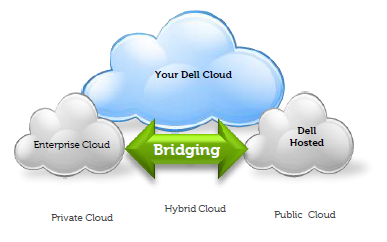In my last post, I showed the evolutionary path from virtualization to cloud computing and the basic concepts that drove this new industry. In this blog I provide some details on the fundamental aspects of cloud computing as it stands today.
Public vs Private vs Hybrid
Public clouds deliver computing resources (applications and storage) to anyone with an internet connection through self-service web interfaces. Private clouds deliver these same resources to corporate users; however the physical cloud infrastructure is managed directly by the company exclusively for internal employees and it not open for public usage. Hybrid clouds are the integration of a private cloud and public cloud where users are able to leverage both private and public cloud services for their computing needs by moving workloads seamlessly between the two clouds via a single management tool.
A new trend has emerged where private clouds are hosted within public clouds with isolation and management ensured allowing customers to get the benefits of a public cloud while still maintaining the control of a private cloud. At Dell, we offer this solution in our Dell Cloud Dedicated service.
Single-tenant vs Multi-tenant
Single-tenant clouds (public, private, or hybrid) provide customers with dedicated servers running private instances of applications in cloud environments. Multi-tenant clouds (public, private, or hybrid) allow multiple companies on the same servers and even multiple customers sharing the same instance of a running application. Many SaaS applications available today are run in a multi-tenant public cloud.
Delivery Models
There are three delivery models currently offered in the industry which can all be run in private, public or hybrid clouds:
- Software as a Service (SaaS) – application access directly via the internet where the executable and data are stored in a cloud
- Platform as a Service (PaaS) – applications are written to a cloud stack whereby the developers are able to leverage cloud resources as part of the design of the application instead of writing to a specific operating system. The applications are then deployed to customers in a SaaS manner.
- Infrastructure as a Service (IaaS) – users access computing resources such as storage or computing cycles to run an application
Cloud vendors are also starting to provide other services such as Network as a Service (NaaS), Database as a Service (DaaS), and Storage as a service (STaaS) that all follow the similar concept of delivering a particular computing resource to a user via the internet.
To learn more about cloud computing, visit the Dell Cloud website to explore our solutions for various businesses and IT needs as well as interact with the Dell Cloud team in our TechCenter Cloud Community.
